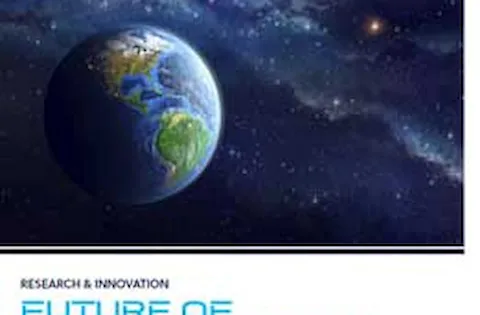It’s been six months since the UN Sustainable Development Goals (SDGs) were published. Already businesses are starting to grapple with how they should respond in the most effective way. DNV GL has been busy too, our Research and Innovation department working with Professor Jorgen Randers from the Norwegian Business School in publishing a report, Future of Spaceship Earth earlier this month. You can read the full report, exec summary and download the model for yourself from our website here.
Whilst the SDGs themselves are somewhat vague, it is clear from our analysis that none of the SDGs will be achieved in all regions, unless extraordinary efforts are made. In spite of their limitations, the SDGs provide the best indication of a future that society could aim for. There is a clear role for business in supporting the goals, contributing alongside other actors to address the challenges that the goals seek to address. Although all the goals will be challenging, the report suggests the most challenging goals will be climate change and inequality. Our analysis shows that others have greater potential to be achieved, such as hunger, health, and water/sanitation. It may be more immediately obvious how business can contribute towards achieving the climate change goal, but what about equality? Much more of a challenge don’t you think?
The good news is that I suspect that for the more mature organisations it won’t be a case of reinventing the wheel – more that of working out how your current strategy and activity addresses and overlaps with the SDGs, then working out whether the gaps should or could be filled. For those with less mature sustainability strategies it offers a great opportunity to use a meaningful framework to move forwards.
For any organisation with activities and supply chains spanning the globe, attention should be paid to the large regional differences in the likelihood of achieving the SDGs that the report identifies. Very generally, the OECD and USA will reach most of the goals, with the exception of those related to consumption and climate. China will resemble OECD and achieve many of the SDGs. Other global regions will fail to achieve most goals. This tells any global organisation where the biggest challenges lie, but also where any activities would have the greatest impact.
Reading between the lines, the report is much more than an analysis of the goals. It considers a multitude of different models , forecasts and scenarios that all businesses should be considering in their long term planning. How will you respond to changes in per capita consumption, population size, labour force productivity and share of renewables in the energy mix for example? Forward thinking organisations are doing this already, building this knowledge into their strategy and innovating products and services in response to a changing world - putting sustainability at the core of their business strategy, where it should be.
How can DNV GL help you?
- Map current strategy and activities against the SDGs
- Establish measurement criteria to monitor and communicate your organisations progress against the SDGs
- Understand and respond to the regional challenges associated with each goal, aligning your approach in the global context
- Identify how the future scenario modelling and forecasting will impact your organisation
- Identify partnerships and collaborative opportunities
Future of Spaceship Earth: Assessing the Sustainable Development Goals
The Spaceship Earth forecast provides useful insight for any organisation. In our first report, we used the forecast to assess the likelihood of our world achieving the UN's 17 Sustainable Development Goals by 2030 - both at a global and regional level.

Future of Spaceship Earth
The basis for the latest Future of Spaceship Earth report.

Our interactive model
Make your own forecast
Future of Spaceship Earth
Read more on the 17 Sustainable Development Goals (SDGs)
Our forecast model
Study the historical data, our forecasts and results for each of five world regions
Additional data and graphs
Access additional material relating to the SDGs not included in our forecast model